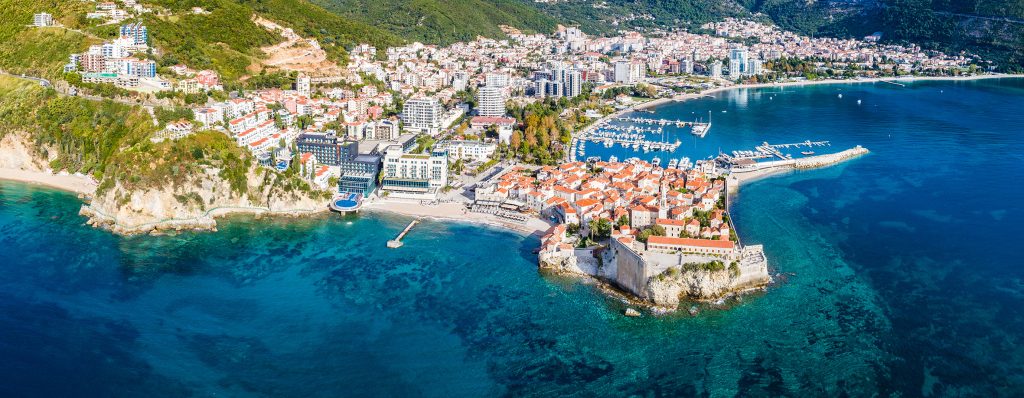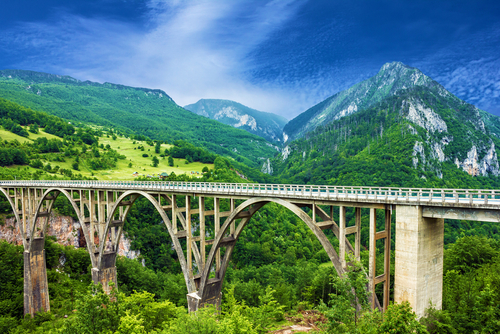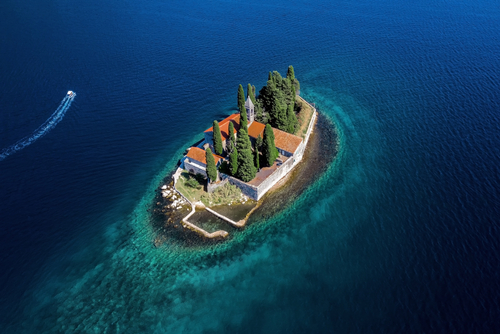Travelling around Montenegro can be fun. Looking at the stunning scenery of the Mediterranean country is almost on everyone’s most back list.
However, it’s always good to know major things before travelling to any country. So we created a list of the top 11 things to know before travelling to Montenegro.
Travelling around Montenegro can be fun. Looking at the stunning scenery of the Mediterranean country is almost on everyone’s most back list. However, it’s always good to know major things before travelling to any country. So we created a list of the top 11 things to know before travelling to Montenegro.

Things to Know Before Traveling in Montenegro
Renting a Car is Worth It
Montenegro’s dramatic scenery is best explored by car. While bus connections between cities and towns exist, renting a car will give you the flexibility to stop wherever you like. Car rental in Podgorica is very easy. The best is to check deals from local rent a car companies because they are much cheaper and have flexible policies.
Montenegro is almost perfect for renting a car. Since you can see the whole country in 7 or 10 days by car. Driving along winding mountain roads and through canyons to discover hidden gems can be exciting.
Beaches In Montenegro Are Among The Best
Home to some of the most beautiful and unspoiled beaches in Europe. With crystal clear waters and stunning scenery, it’s no surprise that visitors flock to its shores every year. From secluded coves and hidden bays to long stretches of sandy beaches, there is something for everyone in this picturesque country.
Jaz Beach is a popular spot, known for its turquoise waters and lively atmosphere, while Mogren Beach boasts breathtaking views of the surrounding cliffs. Sveti Stefan Beach is another favourite, offering a secluded and tranquil escape. Whether you’re looking for relaxation, adventure, or simply a place to soak up the sun, Montenegro’s beaches have it all.
The Scenery is Stunning

Massive lakes, rugged mountains and historic towns. Some of the must-sees include the Bay of Kotor, Durmitor National Park, Biogradska Gora National Park, and Sveti Stefan Island. With massive limestone cliffs, deep canyons and coastal drives, you could spend your whole trip just staring out the window.
In Montenegro, They Use EUR Currency
The official currency is the Euro (EUR), which it adopted in 2002. While Montenegro is not a member of the European Union, it uses the Euro as its currency under an agreement with the European Central Bank. This makes it a popular destination for travellers from the Eurozone, as they don’t need to exchange their currency when visiting the country.
Additionally, using the Euro as its official currency has helped Montenegro to stabilize its economy and make it more attractive to foreign investors. Whether you’re a tourist or a businessperson, knowing that the Euro is the currency used in Montenegro can make your travels and transactions much simpler.
It’s A Cheap Country
In general, it is considered to be an affordable country compared to other European Union (EU) countries. While it’s not a member of the EU, it uses the Euro as its official currency, which can make it easier for travellers from the Eurozone to budget their trips.
Compared to Western European countries, prices in Montenegro are relatively low, particularly for food, accommodation, and transportation. However, prices can vary depending on the location and season. Coastal areas, particularly during the peak summer season, tend to be more expensive than inland areas or the off-season.
Smoking is Allowed in Cafes
Unlike many countries where smoking has been banned in public places, smoking is common in Montenegro. Be prepared to smoke in restaurants, bars, and cafes. If smoke bothers you, try to sit in non-smoking sections and outdoor patios when possible.
Montenegro Is Very Safe For Travellers

Montenegro is generally considered a safe travel destination for visitors. The country has a low crime rate compared to other European countries, and violent crime is rare. The government is committed to maintaining a safe and secure environment for both residents and visitors, and there is a strong police presence in major cities like Podgorica.
Montenegro is also politically stable, with a democratic government that is committed to maintaining good international relations. The country is a member of NATO and has close ties with the European Union, which helps to promote stability and security.
Camp Almost Anywhere
Montenegro has a “right to roam” law, meaning you can camp anywhere in the country that is not private property. Some of the best places to camp are Zabljak in Durmitor National Park, Jaz Beach near Budva, and the Lustica Peninsula. Camping is a great way to immerse yourself in nature on a budget.
Go Hiking in the Mountains
With its mountainous landscape, Montenegro is a hiking paradise. Some of the best hiking trails are in Durmitor National Park, Biogradska Gora National Park, and Lovcen National Park. Go hiking through meadows and old-growth forests, along mountain ridgelines and to the top of peaks with stunning views.
Diverse Landscape
Despite its small size, Montenegro has a diverse landscape ranging from mountains to beaches to historic towns. You can go rafting in Montenegro, cycling, rock climbing, sunbathing or clubbing, all on the same day. There’s something for everyone in Montenegro.
The Rich History
Home to Greeks, Romans, Venetians and Ottomans, Montenegro has a long and rich history. You can see landmarks from these periods throughout the country like walled cities, fortresses, mosques and churches. Must-see historic destinations include Kotor, Budva, Bar and Ulcinj.
What is the best time to visit Montenegro?
The ideal time to visit Montenegro is between May to October when the weather is pleasant and sunny. During this period, the average maximum temperature ranges from 19 ̊ Celsius in May to 29 ̊ Celsius in August, making it the perfect time to enjoy outdoor activities in Montenegro and explore the country’s natural beauty.
However, it’s worth noting that the coastal region can get crowded from July to August, so if you prefer a more peaceful holiday, consider visiting the mountains during this time. For those who enjoy winter sports, the best time to visit is from January to March when there is snow in the mountains.
Etxeko Ibiza presents new Michelin Star menu





